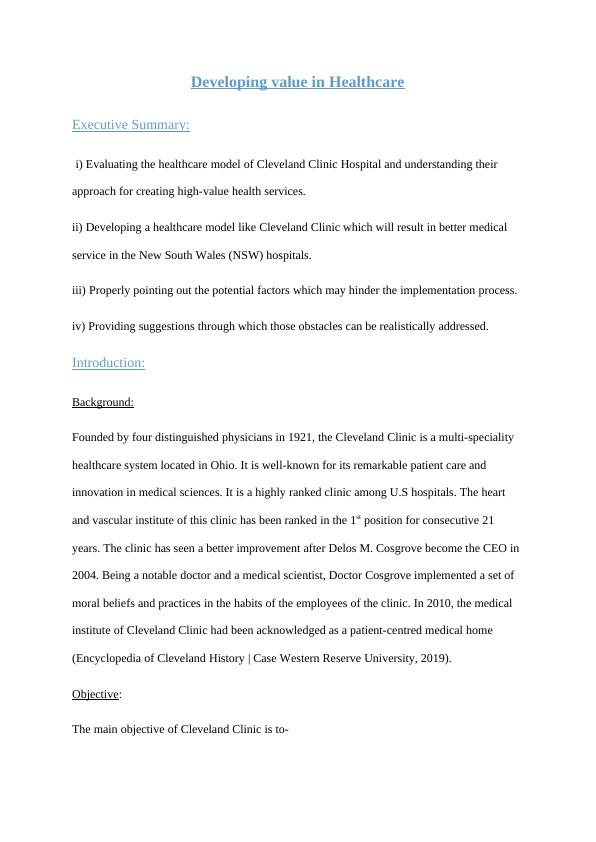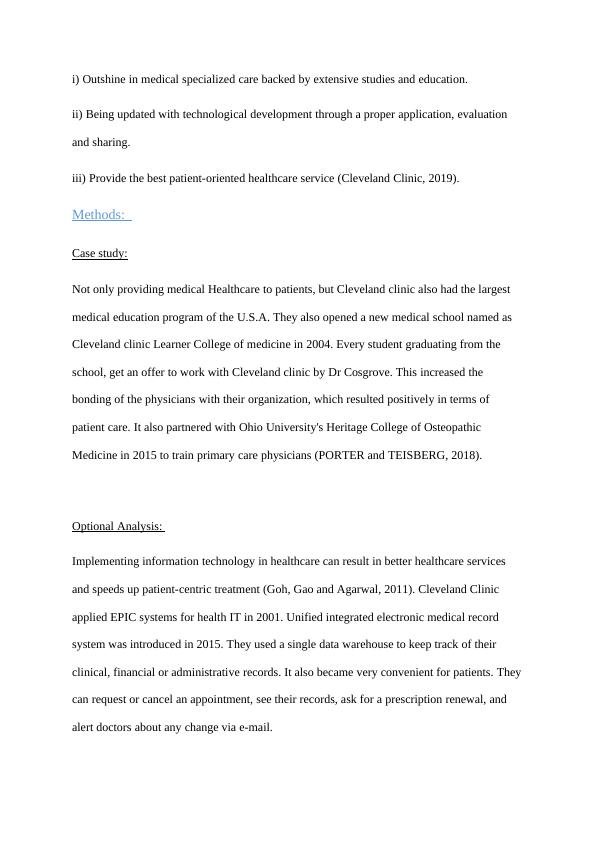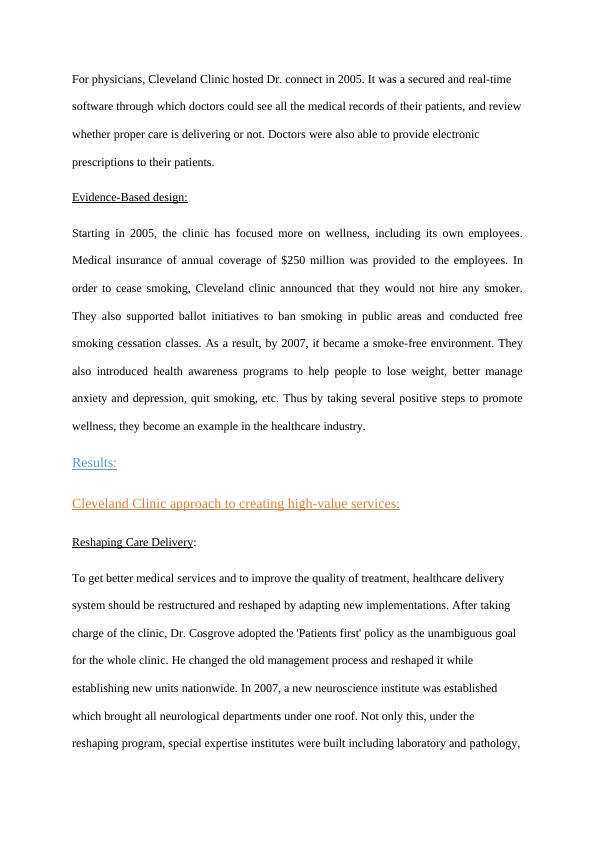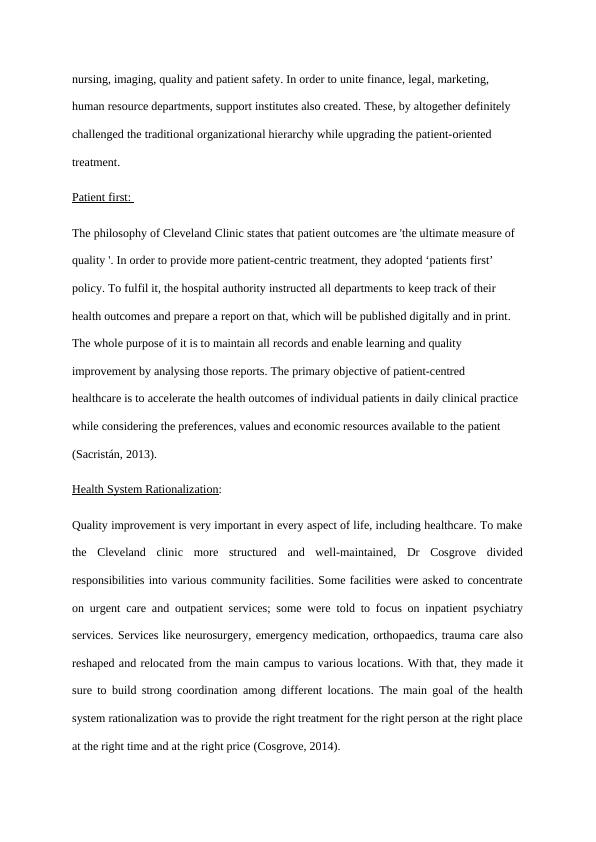Developing Value in Healthcare
This assignment is based on the Harvard Business Review case study of the Cleveland Clinic: Transformation and Growth 2015. The assignment requires an examination of the principles of quality, risk, and cost management in healthcare delivery, as well as identifying factors that hinder or facilitate the achievement of these principles in practice. The assignment also involves developing recommendations for specific actions that NSW hospitals can take based on the Cleveland Clinic model.
Added on 2022-12-29
About This Document
Developing Value in Healthcare
This assignment is based on the Harvard Business Review case study of the Cleveland Clinic: Transformation and Growth 2015. The assignment requires an examination of the principles of quality, risk, and cost management in healthcare delivery, as well as identifying factors that hinder or facilitate the achievement of these principles in practice. The assignment also involves developing recommendations for specific actions that NSW hospitals can take based on the Cleveland Clinic model.
Added on 2022-12-29
End of preview
Want to access all the pages? Upload your documents or become a member.




